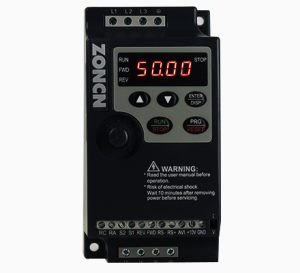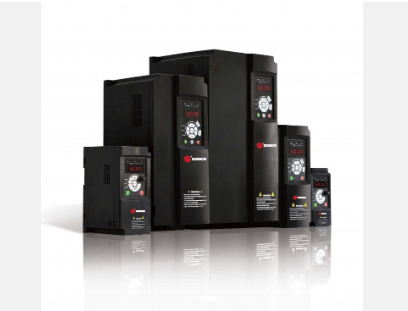Inverter is a power electronic device that adjusts the motor speed by changing the power supply frequency. According to the relationship between the motor speed and the power supply frequency, the inverter controls the motor speed by adjusting the output voltage and frequency. In the frequency conversion process, in order to ensure the stable operation of the motor, it is necessary to keep the ratio between voltage and frequency (V/F ratio) constant. Therefore, the parameter setting of the inverter needs to revolve around this core principle.
1. Control mode
The control mode of the inverter includes speed control, torque control, PID control, etc. When selecting the control mode, it is necessary to select it according to the actual application requirements and accuracy requirements, and perform corresponding static or dynamic identification.
2. Minimum operating frequency
When the motor runs at low speed, the heat dissipation performance is poor, and long-term operation may cause the motor to overheat or even burn. At the same time, the cable current at low speed will also increase, which may cause the cable to heat up. Therefore, it is necessary to set a suitable minimum operating frequency to ensure the safe operation of the motor and cable.
3. Maximum operating frequency
The maximum frequency of the inverter can generally reach 60Hz or higher. However, high-frequency operation will cause the motor to run at high speed, generating greater centrifugal force on the motor’s bearings and rotor. Therefore, when setting the maximum operating frequency, the motor’s bearing capacity and actual application requirements need to be considered.
4. Carrier frequency
The setting of carrier frequency is closely related to the high-order harmonic components of the inverter. High carrier frequency may cause heating of cables and motors, while low carrier frequency may affect the output accuracy of the inverter. Therefore, it is necessary to select a suitable carrier frequency according to the actual application.
5. Motor parameters
The motor parameters are an important part of the inverter parameter setting, including the motor’s power, current, voltage, speed and maximum frequency. These parameters can be directly obtained from the motor’s nameplate and input into the inverter for setting.
6. Frequency hopping
At certain specific frequency points, the motor or the entire system may resonate. In order to avoid this, frequency hopping settings are required. By adjusting the inverter parameters, these resonance points can be avoided to ensure the stable operation of the system.
General steps for setting inverter parameters
Enter the parameter setting mode through the inverter control panel or programming software. This usually requires entering a password or pressing a specific key combination to enter. The inverter parameters are usually divided into different groups, such as basic parameters, advanced parameters, protection parameters, etc. Select the parameter group to be set as needed. Enter a new value or make other settings according to actual needs. After modifying the parameter value, you usually need to confirm and save the setting. On the control panel, you may need to press the confirmation key or the save key; in the programming software, you may need to click the save button. After completing all parameter settings, exit the parameter setting mode. Please note that you must be careful when modifying the inverter parameters, make sure you understand the meaning and impact of the parameters, and follow the operating manual or instructions provided by the manufacturer. Incorrect parameter settings may cause equipment failure or safety hazards.
Parameter setting for synchronous control of multiple inverters
When multiple inverters are required for synchronous control, special parameter settings are required. First, you need to prepare a sufficient number of inverters and connecting wires. Then, connect each inverter to ensure the correct connection of the communication interface. Next, set the parameters. The parameters of the host inverter need to be set to the free protocol communication mode, and the host address needs to be specified. The parameters of the slave inverter need to be set to the communication given mode, and the slave address needs to be specified. Finally, start the host inverter and adjust its frequency. The frequency of the slave inverter will automatically follow the host to achieve synchronous control.
In short, correct parameter settings are crucial to the performance and stability of the inverter. By understanding the basic concepts and main parameters of the inverter and setting them according to actual application requirements, the performance advantages of the inverter can be fully utilized and the efficiency and reliability of the industrial control system can be improved.


